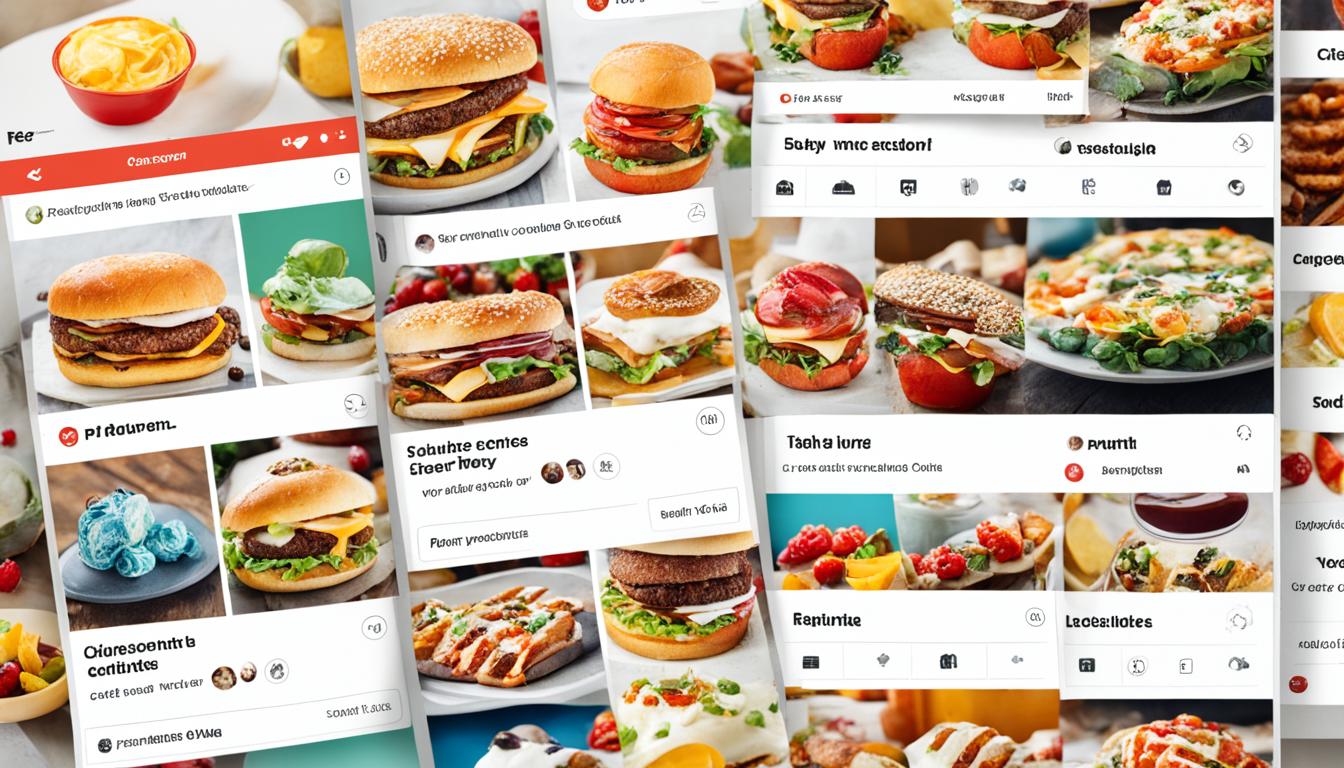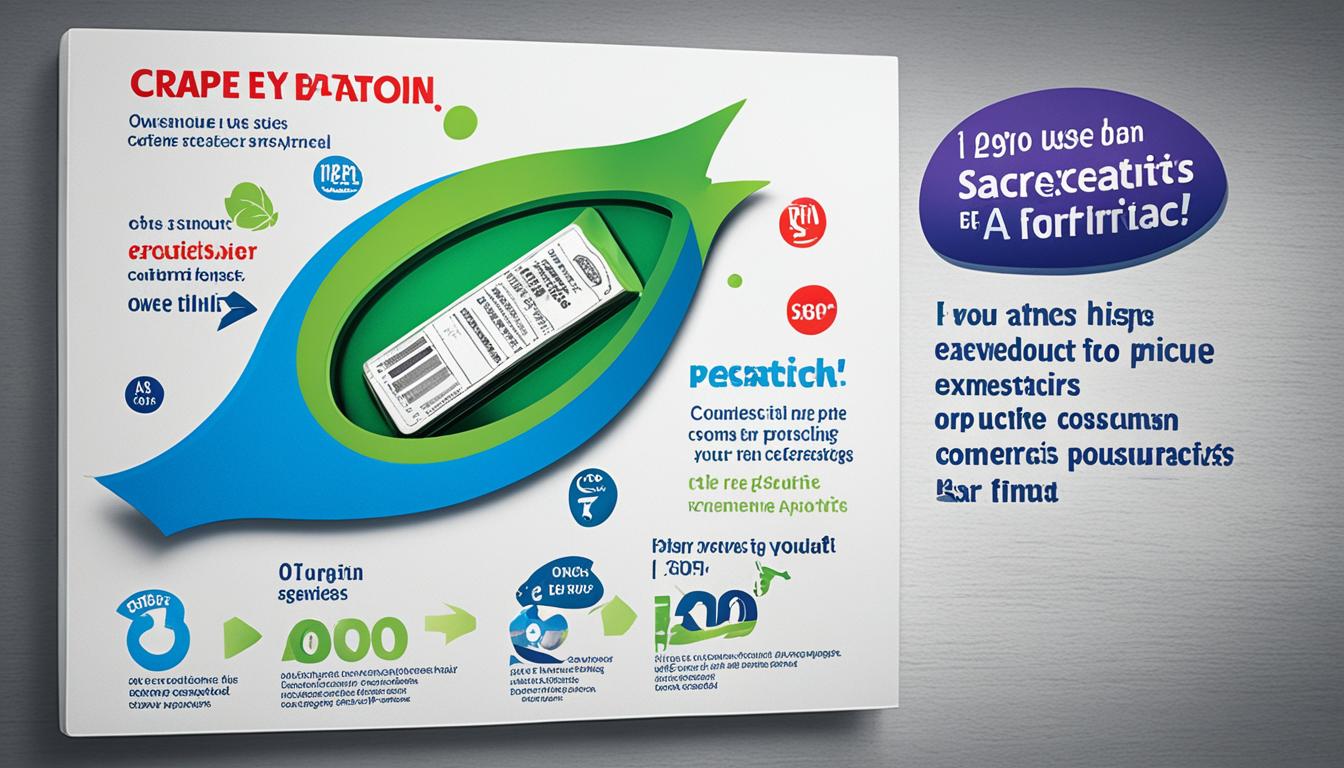Tropicana, founded in 1947, is a leading producer and marketer of branded fruit juices. The company’s marketing strategy encompasses the 4Ps of the marketing mix: product, price, place, and promotion. They offer a wide range of juice flavors and variations, targeting health-conscious consumers. Tropicana’s pricing strategy balances high-quality products with affordable prices. Their distribution channels include supermarkets and online platforms. The brand promotes its products through various marketing channels, including social media and sponsored events. The competitive analysis helps Tropicana stay ahead in the market, and performance tracking allows them to measure the success of their marketing efforts.
Key Takeaways:
- Tropicana is a leading fruit juice producer with a comprehensive marketing strategy.
- Their marketing mix includes product, price, place, and promotion strategies.
- Tropicana targets health-conscious consumers with a wide range of juice flavors.
- They employ competitive analysis and performance tracking to stay ahead in the market.
- Social media and sponsored events are part of Tropicana’s promotion strategy.
Tropicana’s Product Strategy
Tropicana, a renowned brand in the fruit juice market, has developed a robust product strategy to cater to the diverse tastes and preferences of consumers. While specializing in orange juice, Tropicana also offers an array of mouthwatering flavors, including mango, apple, grape, guava, and cranberry. With a total of 70 different juice varieties, Tropicana ensures that there’s something for everyone.
One of Tropicana’s notable product lines is Tropicana Farmstand, which combines the goodness of fruits and vegetables. This innovative range of juices is ideal for health-conscious individuals looking for a tasty blend of flavors and nutrients. Trop50 is another popular product from Tropicana that offers a 50% less sugar option without compromising on taste.
Tropicana also recognizes the growing demand for probiotics and has introduced Tropicana Probiotics to fulfill this need. These beverages provide a delicious way to support digestive health. Moreover, Tropicana Pure Premium stands out as a premium line of juices made from the finest fruits, delivering a refreshing experience with every sip.
For those looking for refreshing alternatives, Tropicana offers a range of lemonades and drinks in flavors like peach, watermelon, and strawberry. These thirst-quenching options are perfect for hot summer days, offering a burst of fruity goodness.
Tropicana Juice Flavors
| Flavor | Description |
|---|---|
| Orange | Classic and refreshing, the flagship flavor of Tropicana. |
| Mango | Sweet and tropical, perfect for a taste of the exotic. |
| Apple | Crisp and refreshing, reminiscent of freshly picked apples. |
| Grape | Rich and fruity, brings the goodness of grapes to your glass. |
| Guava | Tangy and fragrant, a delightful flavor for the adventurous. |
| Cranberry | Tart and tangy, a perfect balance of sweet and sour. |
At Tropicana, every product is crafted with care, using the best fruits to ensure the highest quality and great taste. The brand understands the importance of providing consumers with nutritious options without compromising on flavor. Tropicana’s diverse product portfolio caters to individuals who prioritize health and well-being by offering juices packed with essential nutrients.
Tropicana’s Pricing Strategy
Tropicana’s pricing strategy plays a crucial role in positioning their high-quality fruit juices in the market. While their products are priced slightly higher than competitors, the brand ensures that their prices remain affordable for middle-income families, catering to health-conscious consumers who prioritize quality.
For instance, in the Indian market, Tropicana offers a variety of pack sizes at different prices. A 200 ml tetra pack is priced at INR 20, while a 1000 ml tetra pack is priced at INR 100. Value packs are also available, providing consumers with cost-effective options to enjoy their favorite Tropicana flavors.
Tropicana Pricing Examples:
| Product | Size | Price (INR) |
|---|---|---|
| Tropicana Orange Juice | 200 ml | 20 |
| Tropicana Orange Juice | 1000 ml | 100 |
| Tropicana Value Pack | 2 liters | 250 |
Tropicana’s pricing strategy aims to strike a balance between offering premium quality fruit juices and ensuring accessibility for their target audience. By providing a range of pack sizes at different price points, Tropicana appeals to health-conscious consumers who are willing to pay a slightly higher price for the assurance of high-quality and nutritious fruit juices.
Tropicana’s Place Strategy
Tropicana has strategically expanded its reach beyond the United States and made its products available in numerous countries worldwide. The brand has established a strong presence in various distribution channels, including supermarkets, grocery stores, convenience stores, and general stores. By targeting urban consumers, especially the health-conscious urban youth aged 21-35 and the population above 50 years old, Tropicana has positioned itself to cater to a diverse consumer base.
One of the key factors contributing to Tropicana’s success is its online availability. With the rise of global eCommerce platforms, consumers can easily access Tropicana products wherever they are located. Platforms such as Amazon, Walmart, Alibaba, and local online grocery stores offer a convenient way for customers to purchase Tropicana juices online.
Online Availability of Tropicana products
Tropicana’s Promotion Strategy
Tropicana understands the importance of a comprehensive promotion strategy in reaching its target audience and driving brand awareness. The company employs a blend of conventional and digital marketing tactics to effectively market its products. Through strategic advertising campaigns, social media engagement, and event sponsorships, Tropicana successfully reaches its consumers and promotes a healthy lifestyle.
Conventional Advertising and Print Media
Tropicana utilizes traditional advertising channels, such as television commercials and print media, to reach a wide audience. Television commercials play a significant role in showcasing the brand’s product range and highlighting the health benefits of its juices. Additionally, print media publications, including newspapers and magazines, serve as effective platforms for promoting Tropicana’s offerings to a diverse readership.
Social Media Marketing
Social media platforms have become an integral part of Tropicana’s marketing strategy. Leveraging platforms like Facebook, Twitter, Instagram, LinkedIn, and YouTube, Tropicana engages with its target audience by creating compelling content related to health, wellness, and nutrition. Through regular updates, eye-catching visuals, and informative videos, the brand maintains an active social media presence and encourages consumer interaction.
Promotional Events and Sponsorships
Tropicana actively engages with its consumers by organizing promotional events and sponsoring sports and cultural events. These initiatives provide opportunities for consumers to experience the brand firsthand and try Tropicana’s products. By participating in health awareness programs and hosting events that promote a healthy lifestyle, Tropicana positions itself as a reliable source of nutritious beverages.
Marketing Cycle and Advertising Campaigns
Tropicana follows a well-defined marketing cycle to ensure consistent promotional activities throughout the year. The brand identifies key marketing periods and tailors its advertising campaigns accordingly. By analyzing consumer behavior and market trends, Tropicana creates targeted campaigns to maximize impact and increase brand visibility.
| Marketing Cycle Phase | Advertising Campaign |
|---|---|
| Spring – Health Awareness | Renew Your Health with Tropicana: Spring into Goodness |
| Summer – Refreshment | Stay Cool and Refreshed with Tropicana’s Summer Sips |
| Fall – Back-to-School | Start the School Year Right with Tropicana’s Healthy Choices |
| Winter – Immunity Boost | Boost Your Immunity with Tropicana’s Winter Wellness |
These advertising campaigns are designed to capture the attention of the target audience and highlight the seasonal relevance of Tropicana’s products. By aligning their promotions with consumer needs and preferences, Tropicana ensures its marketing efforts remain compelling and impactful throughout the year.
In conclusion, Tropicana’s promotion strategy combines conventional and digital marketing tactics to effectively engage with its target audience. By leveraging traditional advertising channels, social media platforms, and event sponsorships, Tropicana successfully promotes its products and establishes itself as a trusted brand in the market.
Market Segmentation, Targeting & Positioning of Tropicana
Tropicana’s marketing strategy involves a comprehensive approach to market segmentation, targeting, and brand positioning. The company aims to attract health-conscious consumers of all age groups, with a special focus on the breakfast-conscious middle and higher income groups. By positioning itself as a healthier alternative to caffeinated and carbonated beverages, Tropicana distinguishes its products in a competitive market.
Tropicana’s market segmentation strategy encompasses a wide range of demographics, catering to consumers who prioritize their health and well-being. They particularly target urban areas, where consumer demand for healthy beverages is higher. The brand recognizes that these consumers are willing to invest in quality and authenticity, making Tropicana’s 100% natural juices a perfect fit.
Tropicana emphasizes its unique selling proposition (USP) of offering natural, high-quality juices. Through effective brand positioning, Tropicana has successfully positioned itself as a trusted source of nutritious and refreshing beverages. By tapping into the expanding health-conscious consumer segment, Tropicana has established a strong foothold in the market.
To visually represent Tropicana’s market segmentation, target audience, and brand positioning, an illustrative table is provided below:
| Market Segment | Target Audience | Brand Positioning |
|---|---|---|
| Health-conscious consumers | All age groups; middle and higher income groups; breakfast-conscious individuals | A healthier alternative to caffeinated and carbonated beverages |
| Urban areas | Consumers in urban areas with high demand for healthy beverages | Emphasis on 100% natural juices, catering to consumers who value quality and authenticity |
By carefully analyzing the market, targeting specific consumer segments, and positioning the brand effectively, Tropicana has been able to establish a strong and trusted presence in the beverage industry.
Tropicana’s Rebranding Journey
In 2009, Tropicana embarked on a rebranding journey, which included a significant packaging redesign. The renowned design agency, Arnell Group, was tasked with modernizing the brand’s image and creating packaging that would resonate with consumers.
However, what was intended to be a strategic move ended up causing an unexpected consumer backlash. The new packaging design faced immediate criticism from loyal Tropicana customers, leading to a drastic 20% drop in sales within just two months.
The consumer backlash not only affected Tropicana’s financials but also gave their competitors the opportunity to capitalize on the crisis, further damaging the brand’s market position. The rebranding misstep had a significant impact on Tropicana’s reputation and market share.
To salvage its brand and restore consumer trust, Tropicana made the decision to revert to the original packaging design, investing over $50 million in the process. This bold move aimed to reassure customers and bring back the familiarity they associated with Tropicana’s products.
The decision to undo the rebranding and return to the familiar packaging proved successful in mitigating the damage caused by the initial redesign. Tropicana’s rebranding journey serves as a valuable lesson to brands about the importance of understanding consumer preferences and the emotional connection consumers have with established brand elements.
Table 7: Tropicana’s Rebranding Impact
| Impact | Outcome |
|---|---|
| Consumer Backlash | |
| Sales Decline | 20% drop in sales within two months |
| Competitor Advantage | Rivals capitalized on the crisis, further damaging Tropicana’s market position |
| Reversion to Original Packaging | $50 million investment to restore the brand’s reputation and sales |
The rebranding journey undertaken by Tropicana highlights the importance of careful consideration and research when making significant changes to a brand’s visual identity. Consumer feedback and preferences should be at the forefront of the decision-making process to avoid costly missteps and maintain a strong market presence.
Lessons Learned from Tropicana’s Rebranding Misstep
Tropicana’s rebranding misstep serves as a valuable lesson for brands, highlighting the importance of consumer research, maintaining brand identity, effective communication, and considering the competitive landscape.
When Tropicana underwent a significant packaging redesign in 2009, they failed to fully understand consumer preferences and the emotional connection consumers had with their original packaging. As a result, the new design faced immediate consumer backlash, leading to a shocking 20% drop in sales within two months.
This setback showcases the need for extensive consumer research before implementing any major changes to a brand’s packaging or marketing strategies. Understanding consumer preferences, sentiments, and brand loyalty is crucial for success.
Moreover, maintaining brand identity is essential. Tropicana’s original packaging had become iconic and familiar to consumers. By changing it drastically, the brand lost its distinctiveness and failed to connect with customers on an emotional level.
Effective communication is another key lesson from Tropicana’s misstep. It is vital to properly communicate any changes to consumers, allowing them to understand and appreciate the rationale behind the rebrand. Transparent and authentic communication can help mitigate negative reactions and maintain consumer trust.
Lastly, considering the competitive landscape is crucial. Tropicana did not anticipate their competitors capitalizing on the packaging redesign crisis, leveraging the opportunity to gain market share and further damage Tropicana’s position. Brands must always analyze the market and competitors before making significant changes to stay ahead of the game.
Lessons Learned:
- Conduct thorough consumer research before implementing major changes
- Maintain brand identity to connect with customers emotionally
- Practice transparent and authentic communication
- Analyze the competitive landscape before making significant changes
| Lessons Learned | Actions to Take |
|---|---|
| Thorough Consumer Research | Invest in understanding customer preferences, sentiments, and brand loyalty before making substantial changes |
| Maintaining Brand Identity | Preserve iconic elements that customers have grown to recognize and appreciate |
| Effective Communication | Clearly communicate and articulate the rationale behind any rebranding efforts to maintain consumer trust |
| Considering the Competitive Landscape | Conduct a thorough competitive analysis to anticipate potential challenges and leverage opportunities |
Examples of Iconic Branding Elements
In today’s highly competitive business landscape, iconic branding elements play a crucial role in shaping a company’s identity and influencing consumer perception. Two prime examples of such elements are the Nike Swoosh and the Apple logo.
Nike Swoosh:
The Nike Swoosh is widely recognized and instantly associated with the brand’s commitment to athletic performance, innovation, and excellence. This simple yet powerful logo has become a global symbol of Nike’s brand identity. Its sleek design, featuring a curved checkmark, portrays speed, motion, and triumph.
Apple Logo:
The Apple logo, with its distinctive bitten apple design, has become synonymous with cutting-edge technology, innovation, and premium quality. This iconic symbol is highly recognizable and reflects Apple’s commitment to delivering user-friendly and revolutionary products that enhance the daily lives of consumers.
Both the Nike Swoosh and the Apple logo have had a profound impact on their respective brands. These branding elements have become part of the cultural fabric, instilling trust, loyalty, and recognition among consumers worldwide. Removal of these iconic elements would undoubtedly disrupt the brand’s identity and consumer perception, demonstrating the immense influence and significance of iconic branding elements.
Conclusion
Tropicana’s marketing strategy highlights the significance of understanding consumer preferences, maintaining brand identity, and effective communication with target audiences. The case study of Tropicana’s rebranding misstep serves as a valuable lesson for brands in considering the impact of packaging redesign on consumer loyalty and market position. By attentively listening to customers’ feedback and responding to their needs, brands can avoid costly mistakes and preserve a strong foothold in the market.
The experience of Tropicana reiterates the importance of conducting thorough consumer research before making any major changes to product packaging or marketing strategies. Tropicana’s initial packaging redesign lacked the emotional connection that consumers had with the original packaging, resulting in a significant decline in sales and market share. This emphasizes the need for brands to carefully evaluate consumer preferences and the competitive landscape when implementing any brand-altering initiatives.
In conclusion, Tropicana’s marketing journey presents valuable insights for other brands. It underscores the significance of staying true to brand identity, adapting to changing consumer demands, and creating a strong emotional connection with customers. By learning from Tropicana’s experiences, brands can refine their marketing strategies and establish long-lasting relationships with their target audiences, ultimately achieving success in today’s competitive market.







